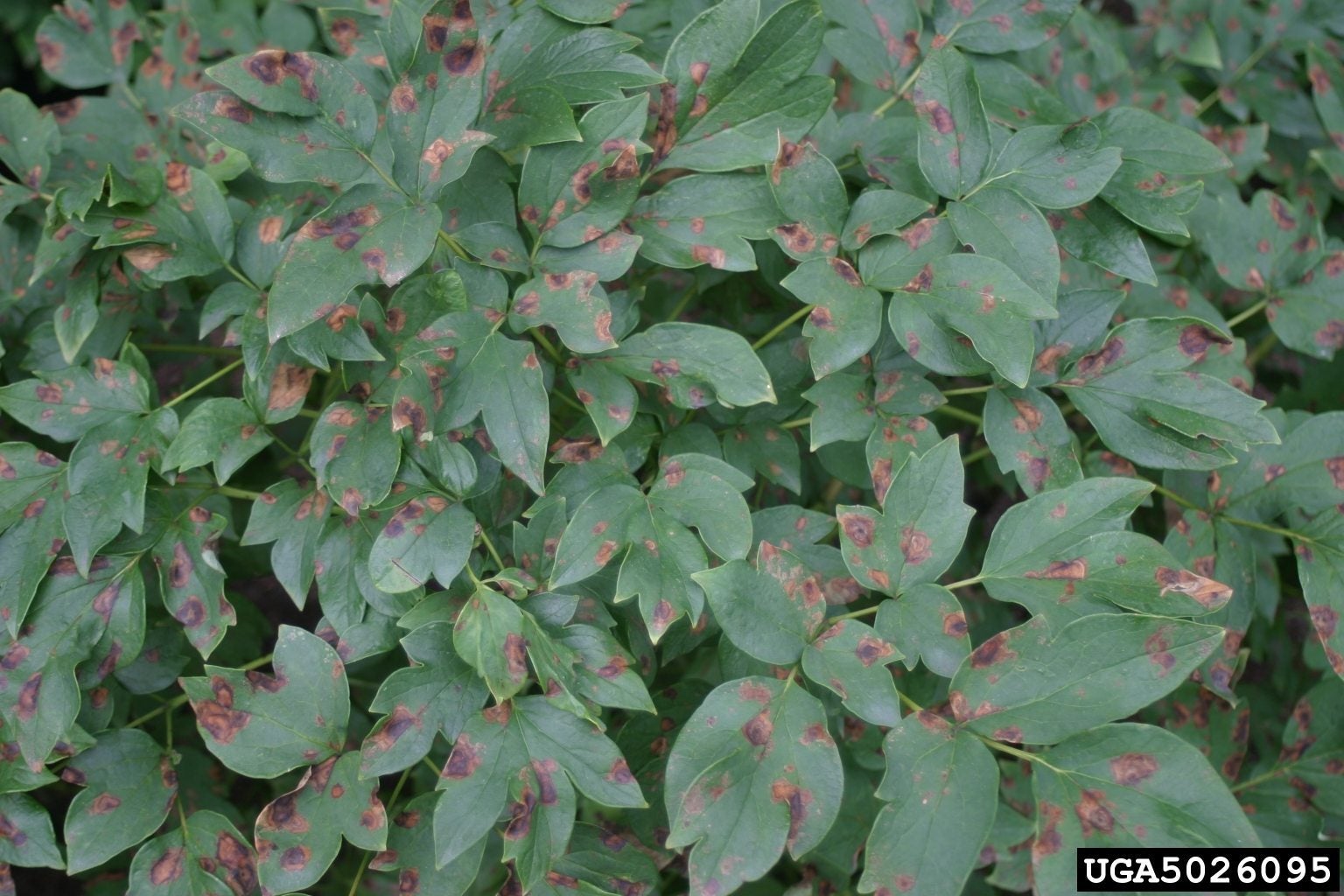Controlling Peony Measles – Learn About Red Spot Of Peonies


Peonies have been cultivated for thousands of years, not only because of their beautiful blooms but also for their medicinal properties. Today, peonies are mainly grown as an ornamental. If you’ve grown peonies, you have probably dealt with peony leaf blotch (a.k.a. peony measles) at some point. In this article, we will discuss this common peony disease, as well as give tips on controlling peony measles.
Recognizing Peony Leaf Blotch
Peony leaf blotch is also commonly known as peony red spot or peony measles. It is a fungal disease caused by Cladosporium paeoniae. Symptoms on peonies with measles include red to purple spots on the upper sides of peony foliage, brown spots on the undersides of leaves, and red to purple streaks on stems.
These spots usually appear during the bloom period and will progress for the rest of the growing season. With age, the small red to purple spots on the upper sides of the foliage will grow, merging together to form large blotches; they will also turn a glossy purple in color. Spots and blotches may also appear on flower buds, petals, and seed pods.
Red spot of peonies is usually just an ugly, superficial problem that does not affect the plant’s vigor or vitality, but in extreme cases, it may cause leaves or stems to grow distorted. Older peony varieties, dwarf peonies, and red peonies tend to be more susceptible to this disease. Many new varieties of peonies have shown some resistance to peony leaf blotch.
How to Treat Peonies with Measles
In summer, when peony leaf blotch is present, there is nothing you can do besides remove the unsightly infected plant tissues and destroy them. As with most fungal diseases, prevention is the best method of controlling peony measles.
This disease will overwinter on plant tissue, garden debris, and in the soil. Cutting peony plants back to the ground in autumn and doing a thorough garden cleanup can help control the reinfection of red spot of peonies. It is also important to avoid overhead watering of peony plants. Instead, water them with a light, slow trickle right at their root zone. Improving air circulation in and around peony plants will also help prevent disease.
In spring, it is important to remove any thick, winter mulch from peony shoots as soon as possible, because heavy, damp mulch can create ideal conditions for fungal diseases. When you are able to do this will depend on your last expected frost dates. If your peonies had leaf blotch the previous year, you should also spray new shoots and the soil around peony plants with preventative fungicides in early spring.
Gardening tips, videos, info and more delivered right to your inbox!
Sign up for the Gardening Know How newsletter today and receive a free copy of our e-book "How to Grow Delicious Tomatoes".
-
 Get Ready For A Summer Of Hummers! Grow These Full Sun Hummingbird Plants and Flowers
Get Ready For A Summer Of Hummers! Grow These Full Sun Hummingbird Plants and FlowersIf you’re lucky enough to enjoy a sunny backyard, make sure you are maxing out on your pollinator opportunities and grow these full sun hummingbird plants and flowers
By Tonya Barnett
-
 12 Lush Alternatives To A Lawn For Sustainable Spaces
12 Lush Alternatives To A Lawn For Sustainable SpacesAlternatives to a lawn are beautiful and also beneficial to your local ecosystem and its pollinators. Explore our top picks for plants to replace grass.
By Tonya Barnett